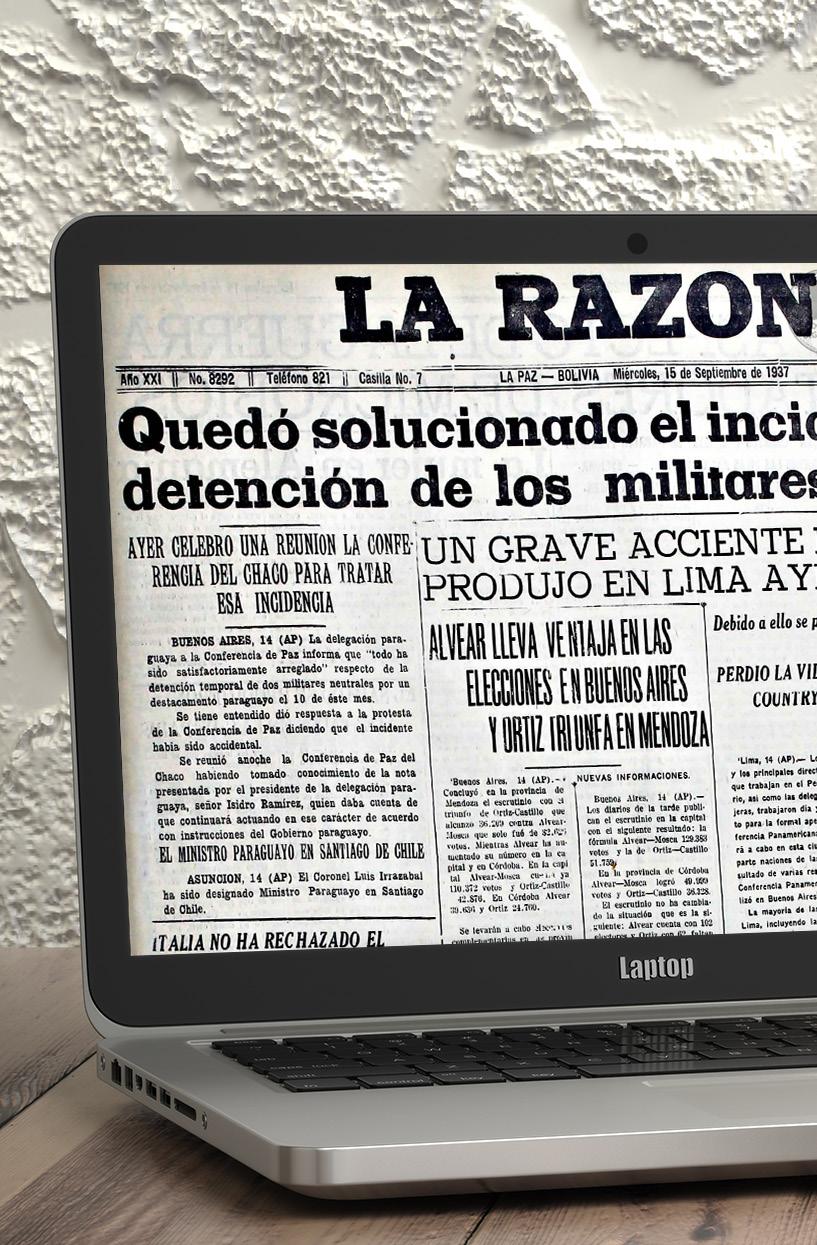
3 minute read
OURS
from LA PAZ IN ed. 65
by Bolivia in
WHAT IS THE AJAYU?
Advertisement
According to Edwin Conde Villarreal, “The consolidation of that energy from the human being or jaqi-warmi (man-woman) depends fundamentally on the harmony that is achieved with the universe, respecting other beings and the life that surrounds us.
Ajayu can also be compared to the aura or chakra, common terms in the Asian worldview and rituals, which are conceived as the vibrational ‘waves’ that flow throughout the universe. Each being and each element of the cosmos perceives these vibrations that exist in the universe, this fact necessarily recharges and feeds the ajayu; the perception is reciprocal, both of positive and negative vibrations ... “
The amauta (Aymara sage) Manuel Alvarado maintains that beings that cannot achieve balance in harmony and that do not respect life or others, “little by little they lose vital energy, that is, their own ajayu.” It indicates that there are two kinds of energies in the human being: the minor or jisk’a ajayu, which is described as the energy that some people lose in life, due to the imbalance of their positive and negative energies, and the major or jach’a ajayu, which is the vital energy of a being, it is lost only with death, but the author mentions that the energy is transcendent and remains in another dimension.
He also considers that: “to fulfill yourself as a person you must find yourself, dialogue with yourself, essentially to find the balance between reason and feelings, which is the main aspect to live in harmony.” The ‘Andean psychology’ transmits as basic knowledge the application of the pillars of coexistence in harmony. The first one in Aymara refers to Jaqiñax yatiñaw, that is to say “you must learn to be a person” and añathuyasktaw, amuyasit ukaw jaqixata, which means “when you meet yourself, think about being a better person.” Source: Servindi
Ilustración: Natha De Ugarte.
EL BARRIO DE COLORES EN LA PAZ
LUGARES
La iniciativa parte de un proyecto mural de 4,5 millones de dólares llamado “Mi Qhatu” que significa mercado en lengua aymara.
El proyecto realizado en el barrio de Chualluma, al oeste de la ciudad de La Paz, un barrio que solía tener alrededor de 160 casitas de adobe y ladrillo con pequeñas ventanas, poco a poco, fue cambiando. Ese lugar ófrico y desolado de tonos marrones y grises fue tornándose en el lugar más colorido de la ciudad y llamativo y vistoso desde la vista del teleférico rojo en la línea que une a la ciudad de La PAz con la ciudad de El Alto, llamando la atención de todo pasajero, muestra sus muros de diferentes colores extravagantes y murales con personajes de rasgos andinos o propios de la cultura.
Este proyecto fue desarrollado por 4 artistas y más de 50 albañiles, habiendo ganado un concurso llamado “Mi barrio, mi hogar”, obteniendo de ésta forma los recursos necesarios para mejorar el aspecto de su zona y al mismo tiempovgenerando de una identidad propia a nivel nacional.
Antes de la pandemia el barrio era visitado constantemente por turistas, quienes recorrían sus calles y se tomaban fotografías con su fondo de mural favorito, a la fecha ya no aparecen por el lugar debido a la coyuntura, pero poco a poco las calles coloridas de este humilde barrio volverán a recibir a sus visitantes.






